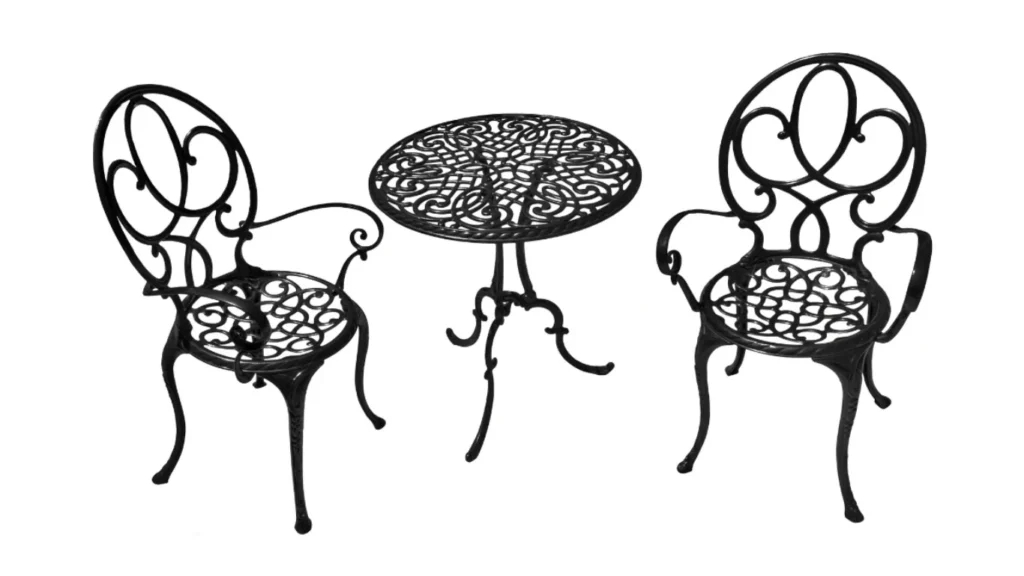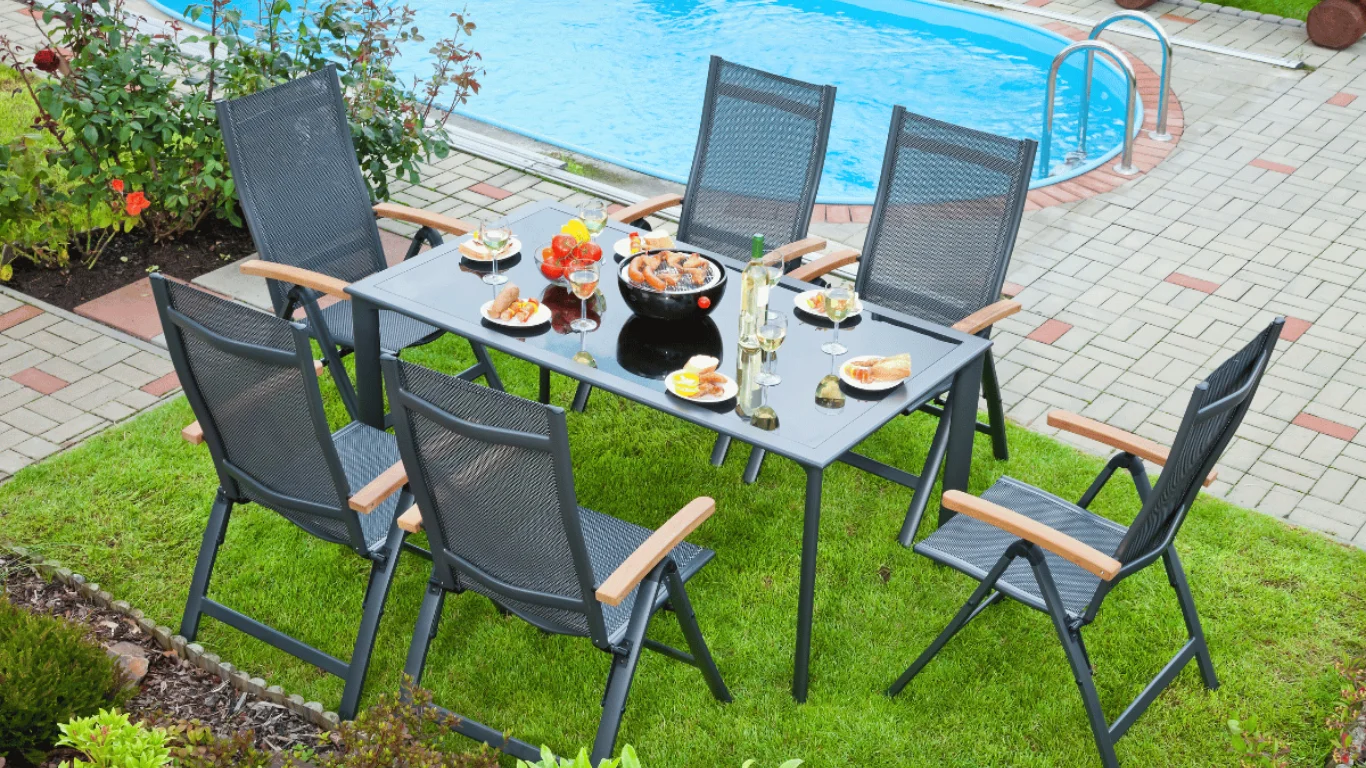Decorative metal furniture adds beauty, style, and strength to any garden. From cozy benches to detailed iron chairs, these pieces can make your outdoor space feel like an elegant retreat. However, to keep them looking their best, regular care is needed. Without attention, rust, dirt, and weather damage can slowly wear them down.
In this guide, you’ll find simple tips for maintaining decorative metal furniture in your garden. You don’t need fancy tools or expensive products. Instead, you’ll learn practical methods that anyone can follow. Whether you have wrought iron, aluminum, or steel pieces, these tips will help them shine for years.
Why Maintenance Matters For Metal Garden Furniture
Longevity And Value
Metal furniture is an investment. With proper care, it can last for decades, saving you money in the long run. Without care, however, it can quickly rust and lose its charm.
Appearance And Style
A well-maintained garden chair or table doesn’t just serve a purpose. It also adds beauty and character to your outdoor space. Imagine walking into your garden and seeing shining, polished furniture that invites you to sit and relax.Signature pieces, like a butterfly garden bench, can even become the centerpiece of your outdoor design, blending practicality with artistic charm. If you enjoy styling your home, you can explore more home improvement ideas to match your indoor and outdoor themes.
Comfort And Usability
Clean, well-cared-for furniture is more comfortable to use. Rust-free surfaces feel smooth, while sturdy frames remain safe and supportive for everyone in your family.
Step 1: Cleaning Decorative Metal Furniture

Regular Dusting And Washing
The first step to maintenance is keeping your furniture clean. Dust, pollen, and dirt can collect on the surface. Over time, they can cause scratches and even rust. To prevent this, wipe your furniture weekly with a soft cloth. For a deeper clean, use mild soap mixed with warm water.
Removing Stubborn Stains
Sometimes, rain or garden debris may leave tough marks. For these, a sponge with a gentle scrubbing pad works best. Avoid steel wool or harsh chemicals because they can scratch the surface.
Drying Is Key
After cleaning, always dry your furniture with a towel. Leaving water to air dry can lead to rust spots, especially in hidden corners.
Step 2: Protecting Against Rust And Weather
Use Protective Coatings
Metal furniture often faces challenges from rain, sun, and changing temperatures. To protect it, apply a thin coat of car wax or furniture sealant every few months. This creates a barrier that keeps moisture out and prevents rust.
Invest In Covers
When the weather gets rough, covers can be a lifesaver. Waterproof covers protect furniture from heavy rain, snow, and dust. They also reduce fading from the sun. If possible, choose covers with ties or straps so they stay in place even on windy days.
Store Furniture During Harsh Seasons
If you live in an area with strong winters or heavy storms, consider storing your furniture in a shed or garage during the off-season. This simple step can add years to its life. For more on how furniture impacts flow and usability in different spaces, check out this guide on furniture functionality in lounges.
Step 3: Handling Rust And Small Repairs
Spotting Early Rust
Even with care, a few rust spots may appear. The trick is to handle them early. Check your furniture once a month for tiny orange or brown spots.
Removing Rust
To remove rust, lightly sand the spot with fine sandpaper. Then, apply a rust-resistant primer and paint. This not only repairs the damage but also gives your furniture a fresh look.
Tightening Loose Screws And Bolts
Over time, screws and bolts may loosen. Make it a habit to check them regularly and tighten as needed. A stable chair or table is safer and more comfortable to use.
Repainting For A Fresh Look
Every few years, repainting can make your metal furniture look brand new. Choose outdoor metal paint, and always apply it in thin, even layers.
Step 4: Styling And Placement Tips
Choosing The Right Spot In Your Garden
Where you place your metal furniture can affect how long it lasts. Try to set it in a shaded area where it is less exposed to direct sunlight. If shade isn’t possible, rotate the furniture from time to time so one side doesn’t fade faster than the other.
Pairing With Cushions And Decor
Adding cushions, pillows, or throws can make your decorative metal furniture more inviting. Choose outdoor fabrics that resist water and fading. This not only boosts comfort but also adds color to your garden.
Blending With Plants And Paths
Metal furniture looks stunning when paired with flowers, garden paths, or stone features. Positioning a wrought iron bench near a rose bush, for instance, creates a peaceful and classic scene. For more inspiration on styling your outdoor spaces, explore the full collection at The Grow Garden.
Step 5: Simple Maintenance Routine

Weekly Routine
- Dust and wipe down surfaces
- Check for water spots or early rust
Monthly Routine
- Wash with soap and water
- Tighten bolts and screws
- Inspect for rust or paint chips
Yearly Routine
- Reapply wax or sealant
- Repaint if needed
- Store during harsh seasons
This routine ensures your decorative metal furniture stays strong, safe, and beautiful.
Conclusion:
By following these tips for maintaining decorative metal furniture in your garden, you can protect your investment and keep your outdoor space welcoming. With regular cleaning, protective coatings, and a touch of style, your furniture will remain both functional and beautiful for many years.
Remember, caring for your furniture doesn’t have to be hard. Simple steps, done consistently, make all the difference. Whether it’s preventing rust, tightening bolts, or adding fresh paint, each action adds to the charm of your garden.
So, take a little time each week, and soon, your outdoor furniture will reward you with comfort, beauty, and endless moments of relaxation in your green space.







